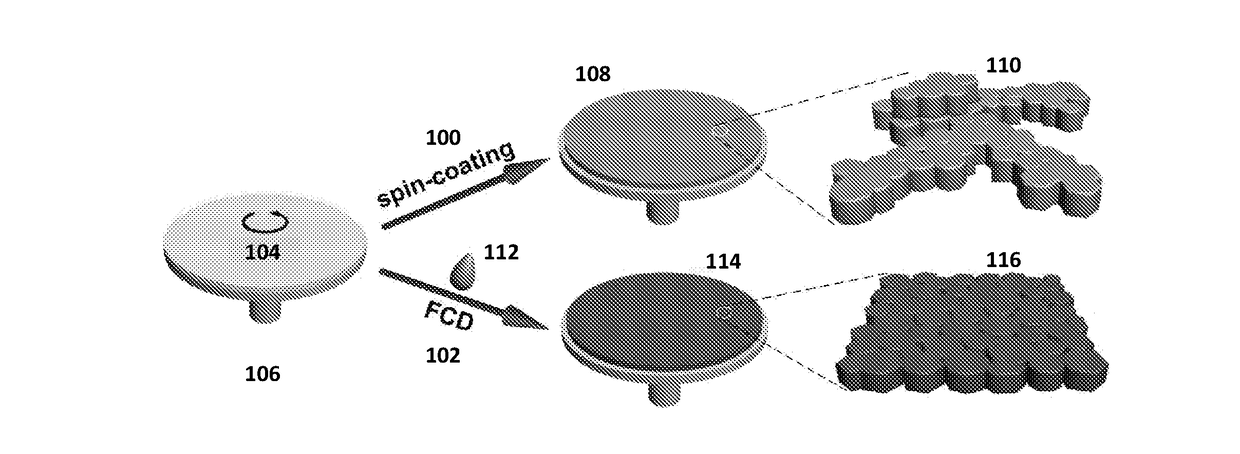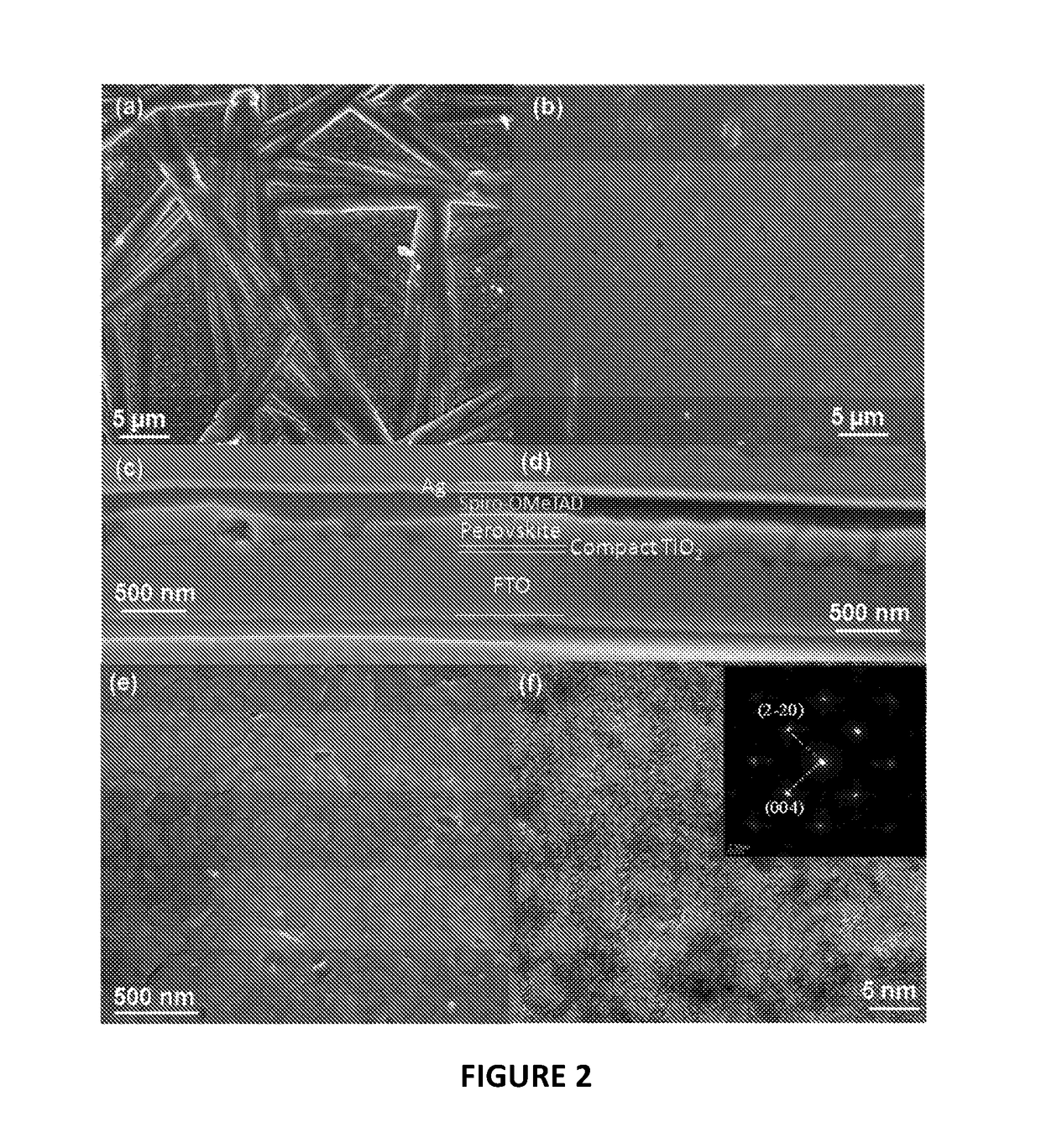Precipitation process for producing perovskite-based solar cells
a technology of perovskite and solar cells, applied in the direction of final product manufacturing, liquid/solution decomposition chemical coating, sustainable manufacturing/processing, etc., can solve the problem of extended time for perovskite precipitation from solution, and achieve the effect of controlling the thickness of the resulting film and promoting the nucleation of perovskite crystals
- Summary
- Abstract
- Description
- Claims
- Application Information
AI Technical Summary
Benefits of technology
Problems solved by technology
Method used
Image
Examples
example 1
[0069]The substrates were prepared by depositing a dense TiO2 layer (30 nm thick) on fluorine-doped tin oxide (FTO) coated glass using spray pyrolysis. A DMF solution of CH3NH3PbI3 (˜45 wt %) was then spin-coated on the FTO substrate at 5000 rpm. After a short period of time (ca. 6 seconds), a solution of chlorobenzene was rapidly added and allowed to spread on the surface of the substrate. Due to the insolubility of CH3NH3PbI3, and also the two components that make up this material, in chlorobenzene, rapid nucleation and growth of the perovskite crystals occurs. An instant color change of the film from light yellow to dark brown was observed. In contrast, if no chlorobenzene was introduced, the liquid film dried more slowly during spin-coating and a shiny-grey film was obtained. The films were then subjected to annealing at 100° C. for 10 min to evaporate any residual solvent and to further promote crystallization.
[0070]FIG. 4 shows the morphology and structural characterization of...
example 2
[0072]To investigate the kinetics during film formation using FCD, chlorobenzene solution was introduced onto the spinning substrate at different time to initiate the nucleation of perovskite crystal. FIG. 3 shows SEM images of the surface of the perovskite films prepared by adding chlorobenzene solution at different times. SEM images (a) and (d) show the film after 2 seconds. SEM images (b) and (e) show the film at four seconds. SEM images (c) and (f) show the film at eight seconds.
[0073]To understand the observable differences in morphology, the spin-coating process can be divided into three stages. In the first stage, the spin-off of excess solvent is a dominant process while the solution concentration remains little changed. If the chlorobenzene solution is introduced at this stage, rapid nucleation and growth of perovskite crystals happens together with solvent spin-off. Because the nucleation occurred firstly at the interface between perovskite solution and the dropped chlorob...
example 3
[0074]Solar cells were constructed with perovskite films produced by FCD using the optimized protocol.
[0075]FIG. 6 illustrates photovoltaic device characterization. a, Schematic illustration of a typical photovoltaic device. b, Cross-sectional SEM image of an optimized device. c, J-V curve of the best-performing perovskite solar cell measured at a simulated AM1.5G solar irradiation of 100 mW cm−2 (solid line) and in the dark (dashed line). d, IPCE spectrum of the solar cell corresponding to (c).
[0076]FIG. 6(a) illustrates the photovoltaic device structure. FIG. 6(b) shows a cross-sectional SEM image of an optimized photovoltaic device, taken applying focus ion beam etching. Although slight shrinkage of the spiro-OMeTAD layer was observed at the cross-section during gallium ion beam etching, which causes charging and a bright contrast at the edge of the perovskite layer, the optimized device can be clearly seen to comprise a 30-nm-thick dense TiO2 layer on FTO, a 350 nm perovskite la...
PUM
| Property | Measurement | Unit |
|---|---|---|
| thickness | aaaaa | aaaaa |
| number average diameter | aaaaa | aaaaa |
| thickness | aaaaa | aaaaa |
Abstract
Description
Claims
Application Information
 Login to View More
Login to View More - R&D
- Intellectual Property
- Life Sciences
- Materials
- Tech Scout
- Unparalleled Data Quality
- Higher Quality Content
- 60% Fewer Hallucinations
Browse by: Latest US Patents, China's latest patents, Technical Efficacy Thesaurus, Application Domain, Technology Topic, Popular Technical Reports.
© 2025 PatSnap. All rights reserved.Legal|Privacy policy|Modern Slavery Act Transparency Statement|Sitemap|About US| Contact US: help@patsnap.com



